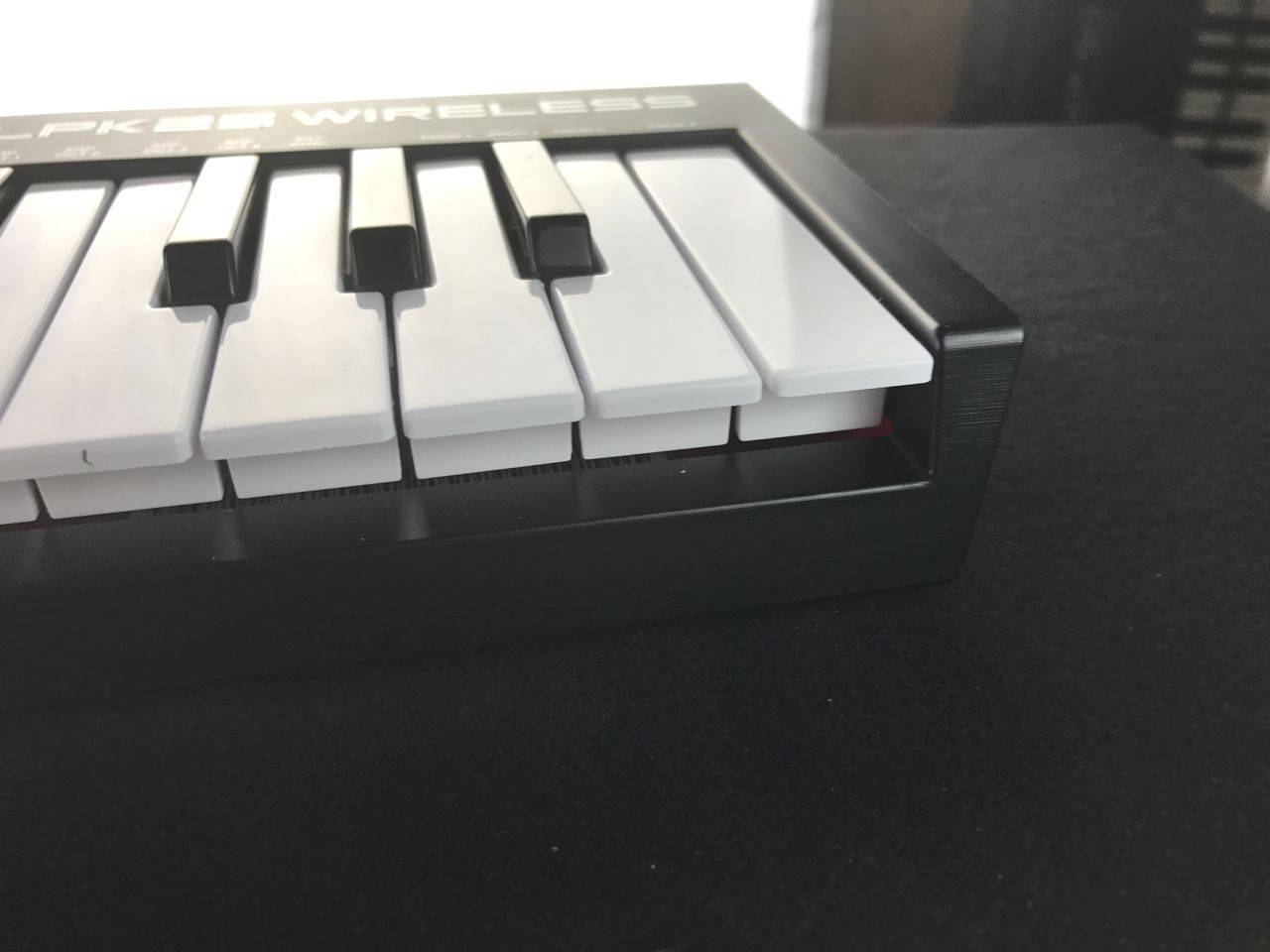

Akai Lpk25 No Sound Mac And PC
The Akai LPK25 USB MIDI Controller keyboard is a miniature, lightweight piano style controller for your laptop, PC or MAC computer. The LPDK25 works plug and play with Mac and PC and requires no software driver.Product information - AKAI LPK25 Laptop Performance Keyboard. Whereas Korg's range offers a mini keyboard, drum pads and control knobs/sliders across three separate models, Akai have condensed a near‑similar range of facilities into two units, the LPD8 Pad Controller and the LPK25 Performance Keyboard.Get your AKAI LPK25 Portable MIDI Controller Keyboard from Better Music.
LPD8The Akai LPK25 is a portable USB keyboard controller with 25. PDF user manuals are accessible from within the Program Files / AkaiPro folder, although it's unlikely you'll get stuck, as operation of the software and hardware is simple and very intuitive. Once this is installed, simply connect a unit via the included USB cable, then fire up the appropriate software editor and you're ready to go. Each unit is supplied with its own mini CD‑ROM containing librarian/editing software. It features 25 velocity sensitive keys that can be banked.
In CC mode, all eight pads transmit control change messages, and each pad's controller message is user-definable via the LPD8 editing software. The backlit, velocity-sensitive pads themselves have quadruple functions, these being selected via the four smaller buttons to the left.In Program mode, the lower four pads become preset buttons, selecting any of the LPD8's four user‑definable presets. Although Korg's Nano Pad and Nano Kontrol between them offer more pads, knobs, sliders and buttons, the LPD8 represents a reasonable compromise, given the limited physical space of the single unit.

The keys are velocity sensitive (the velocity curve is fixed) and are just about large enough to be playable by all but the chubbiest of fingers. LPK25The 25‑note, C‑C mini keyboard of the LPK25 resembles those posh types of melodica I couldn't afford as a kid. The eight rotary controller knobs are straightforward in operation, with controller number and minimum/maximum operational range assignable for each knob. In CC mode, the 'on' hit transmits a control value dependent on velocity, while the 'off' hit sends a value of zero.
The arpeggiator also has an option to sync to external clock, although I couldn't get this to work. Optionally, the LPK25's Tap Tempo button allows you to input the tempo on the fly, and can be set to respond after two, three or four taps. Its time base can be set to correspond to 1/4, 1/8, 1/16 and 1/32 straight and triplet note values relative to the tempo, the bpm of which is determined in the editing software. As a result, I found it difficult to consistently generate velocity values in the range between 1 and 70 without playing very gingerly indeed!The LPK25 features a built‑in arpeggiator, which offers various up/down modes, as well as random arpeggiation. The feel of the keyboard is somewhat spongy, and its fixed velocity curve appears to be inversely exponential.
Nevertheless, for laptop musicians needing a compact, lightweight means of inputting notes and beats, or applying the occasional real‑time parameter tweak, both units may well offer just the right facilities.The LPD8 & LPK25 Editors The LPD8 Editor software.The same operational rules apply to both LPD8 and LPK25 editors. It must be said that Akai's choice of six‑point crimson‑on‑black lettering makes for hard reading even in good lighting! ConclusionThose of a particularly demanding nature may require a more sophisticated level of control than these units provide. By holding the Arp on/off button and pressing the appropriate keys, you can adjust the time base, mode and octave range of the arpeggiator without having to go to the editor. Just above each key are the various arpeggiator functions printed in tiny crimson letters. However, it transpires that Cakewalk's Sonar, my DAW of choice, cannot transmit MIDI clock from a USB port!The arpeggiator also includes a latching option, which can either be programmed into a preset, or invoked manually from the unit using the sustain button.
If Sonar was started first, everything worked fine.I contacted Akai about this, and they said it's not a fault with the LPD8 or LPK25, but is due to the fact that in Windows XP, only one application can have complete access to a USB MIDI port at a time. If either editor was started before running Sonar, its USB port would be listed in Sonar's device list, but remained stubbornly inaccessible. However, an issue became apparent concerning the prioritisation of the USB port when using the controllers alongside a host DAW, in my case Sonar 8 running under Windows XP. This is quickly and easily done: in the editor, just select the preset number you wish to update, click on 'Commit — Upload' and the hardware updates instantly. Parameter changes made in the editor can't be auditioned in real time but must be transmitted to the hardware first.
Another workaround I found was to save each device's presets as files to the hard drive (a handy librarian function in its own right) and load them back into the editor when required.


 0 kommentar(er)
0 kommentar(er)
